The more we read about [Josh Pieper]’s quadruped, the mjbots quad A0, the more blown away we are by his year of progress on the design. Each part of the robot deserves its own article: from the heavily modified brushless motors (with custom planetary gears) to the custom motor driver designed just for this project.
[Josh], realized early on that the off-the-shelf components like an ODrive just weren’t going to cut it for his application. So he designed his own board, took it through four revisions, and even did thermal and cycle testing on it. He ended up with the compact moteus board. It can pump out 400 Watts of peak power while its 3Mbit control protocol leaves plenty of bandwidth for real time dynamic control.
The motors and gearboxes are also impressive. It took thorough experimenting and taking inspiration from other projects before he arrived at a 8108 quad copter motor modified and upgraded so heavily its own mother wouldn’t recognize it. This is all packed into a leg unit with three degrees of freedom that puts even the fanciest servo based quadruped to shame.
Finally it’s all packed into a neat four-legged robot frame with batteries and a Pi. You can get a video summary of the robot here or after the break, and we recommend reading his blog for some more images and details.
Continue reading “Amazing Open Source Quadruped Capable Of Dynamic Motion”

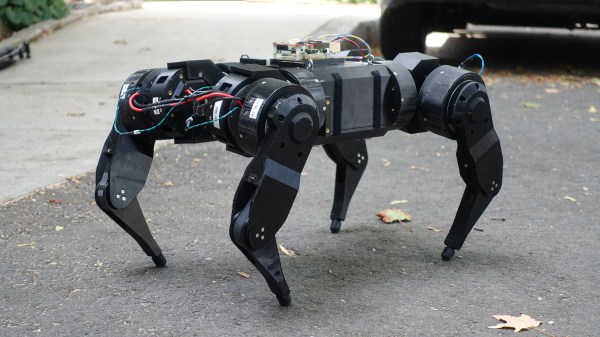

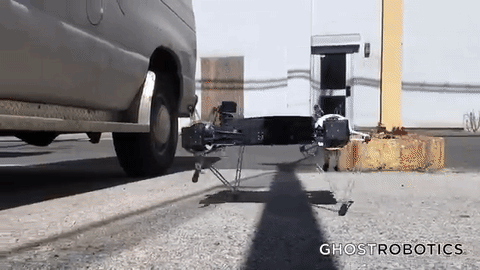
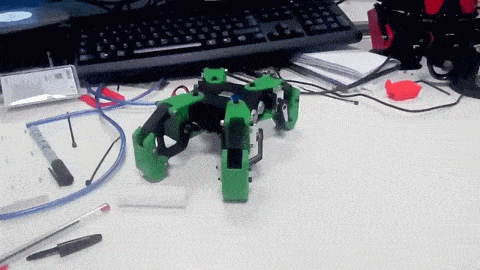
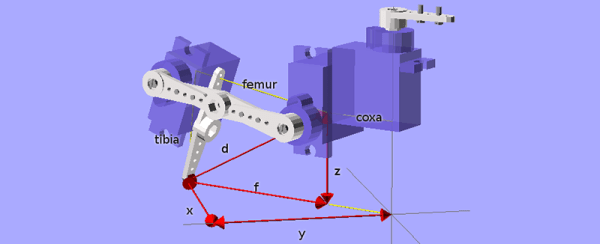
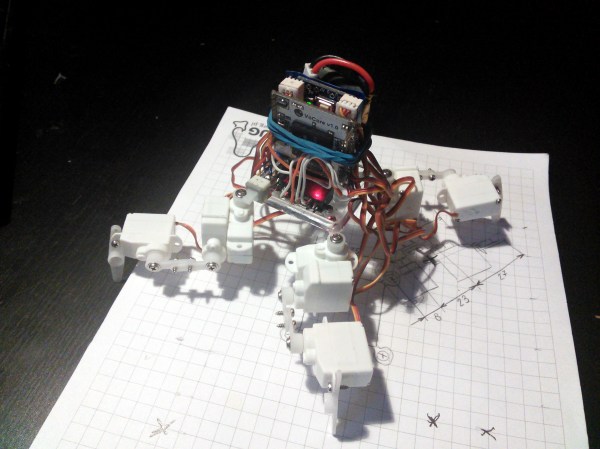
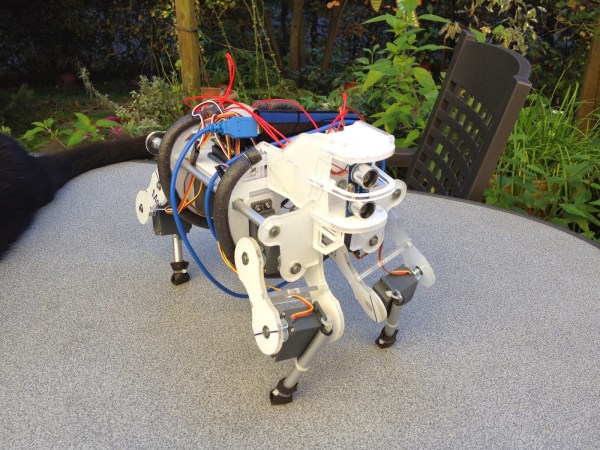
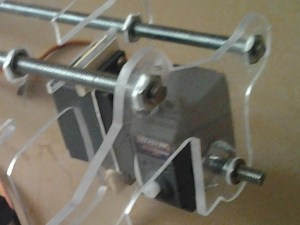 [Max] designed all of the mechanical parts himself. After weighing the advantages and disadvantages of different materials, he decided that the frame would be made from 5mm acrylic sheet. The main body of the robot has acrylic ribs that are spaced apart by threaded rods. Twelve RC servos make up all of the joints, 3 in each leg. Notice in this photo how there is one servo that immediately rotates another servo. To support the other side of the rotating servo, [Max] epoxied on a T-nut, stuck in a short length of threaded rod which is then supported in the frame by a ball bearing. Simple and effective! The upper portions of the legs are also made from acrylic sheet and the lower legs are from a cheap camera tripod. Rubber feet ensure a slip resistant stance.
[Max] designed all of the mechanical parts himself. After weighing the advantages and disadvantages of different materials, he decided that the frame would be made from 5mm acrylic sheet. The main body of the robot has acrylic ribs that are spaced apart by threaded rods. Twelve RC servos make up all of the joints, 3 in each leg. Notice in this photo how there is one servo that immediately rotates another servo. To support the other side of the rotating servo, [Max] epoxied on a T-nut, stuck in a short length of threaded rod which is then supported in the frame by a ball bearing. Simple and effective! The upper portions of the legs are also made from acrylic sheet and the lower legs are from a cheap camera tripod. Rubber feet ensure a slip resistant stance.









